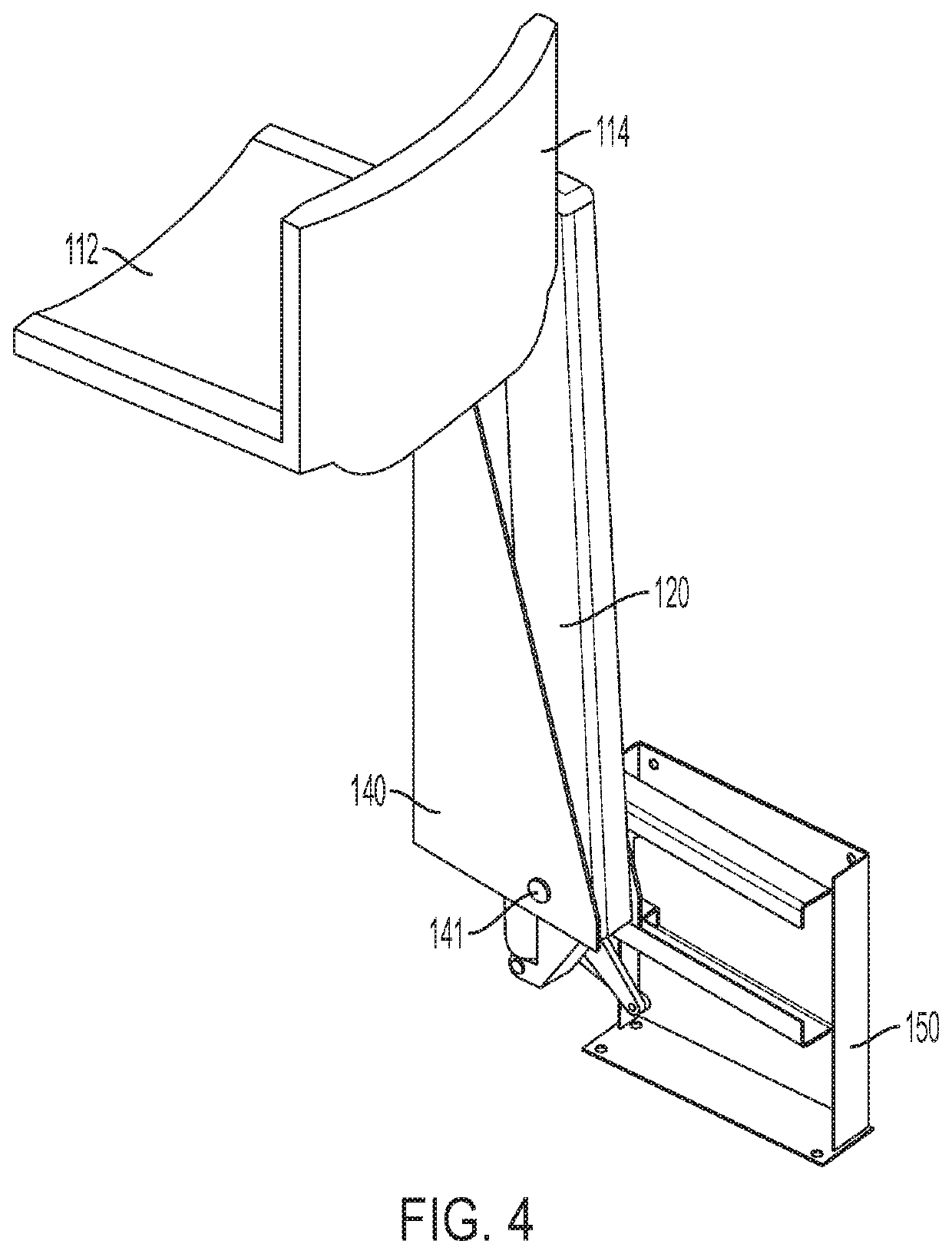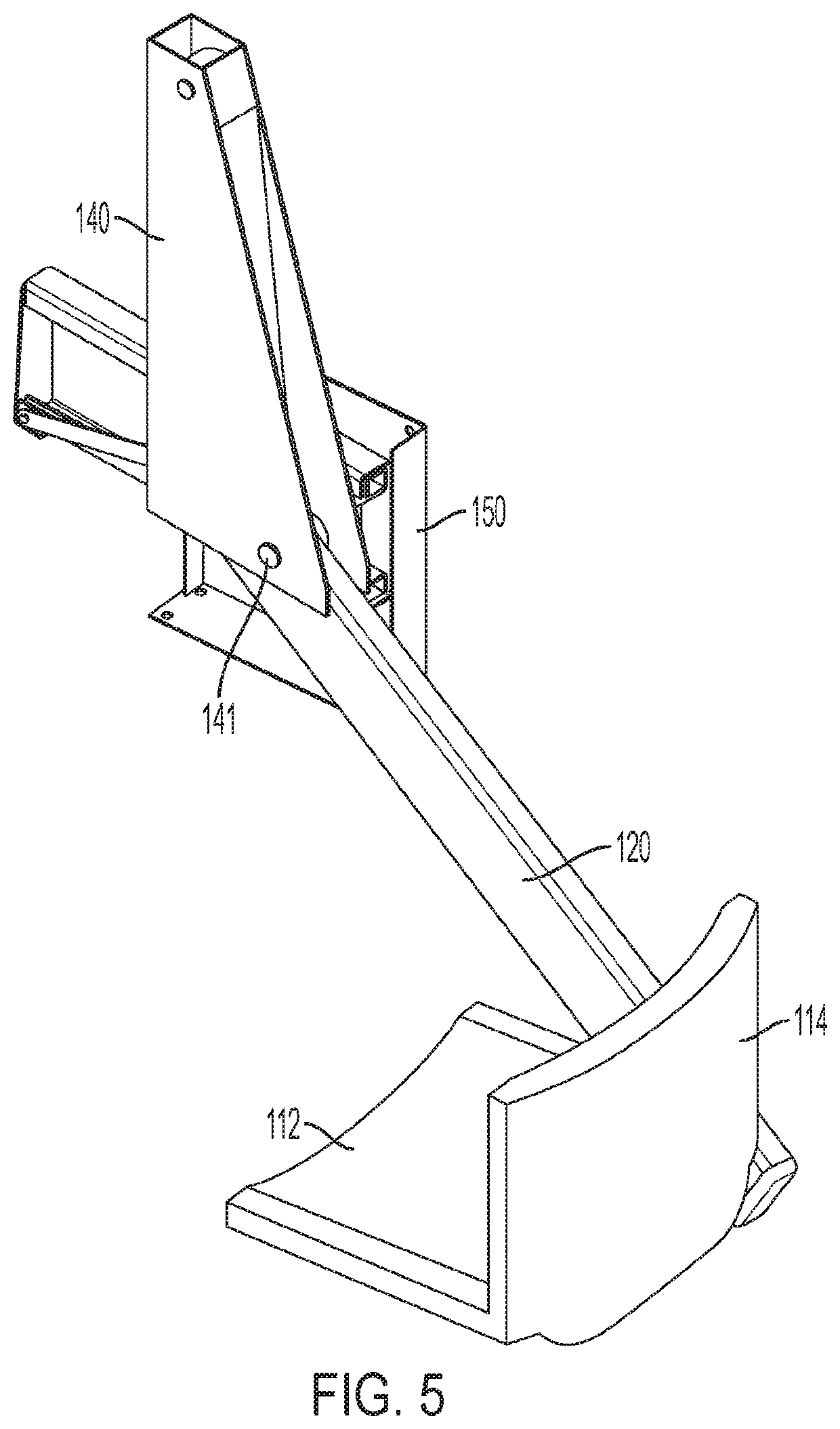Motor home chair lift
a technology for motor homes and lifts, applied in vehicle components, vehicle arrangements, ambulance services, etc., can solve the problems of significant modification, significant reduction of floor plan functionality and/or certain desirable features of living quarters, and difficulty in climbing up and down those steps, etc., and achieve the effect of being affordable to manufacture and maintain
- Summary
- Abstract
- Description
- Claims
- Application Information
AI Technical Summary
Benefits of technology
Problems solved by technology
Method used
Image
Examples
Embodiment Construction
[0033]The drawings show various embodiments of the present invention both schematically, as separate from a particular vehicle, and as in preferred embodiments mounted within a vehicle. Various vehicular and non-vehicular applications of the present invention are specifically envisioned, but for purposes of illustration, a motor home application is presented herein.
[0034]The following features are shown in the drawings:[0035]a vehicle, specifically a motor home 10, having[0036]a passenger floor 12,[0037]a front window 14,[0038]a dashboard 16,[0039]a front passenger seat 18,[0040]a front passenger door 20,[0041]internal steps 22, and[0042]external steps 24 adjacent to ground level 26,[0043]an apparatus 100 having[0044]a lift seat 110 comprising:[0045]a seat base 112,[0046]a seat back 114 hinged to the seat base,[0047]a seat belt 116 connected to the lift seat for restraining a user from unwanted sliding out of the seat,[0048]a storage strap 118 for releasably holding the seat base to...
PUM
 Login to View More
Login to View More Abstract
Description
Claims
Application Information
 Login to View More
Login to View More - R&D
- Intellectual Property
- Life Sciences
- Materials
- Tech Scout
- Unparalleled Data Quality
- Higher Quality Content
- 60% Fewer Hallucinations
Browse by: Latest US Patents, China's latest patents, Technical Efficacy Thesaurus, Application Domain, Technology Topic, Popular Technical Reports.
© 2025 PatSnap. All rights reserved.Legal|Privacy policy|Modern Slavery Act Transparency Statement|Sitemap|About US| Contact US: help@patsnap.com



